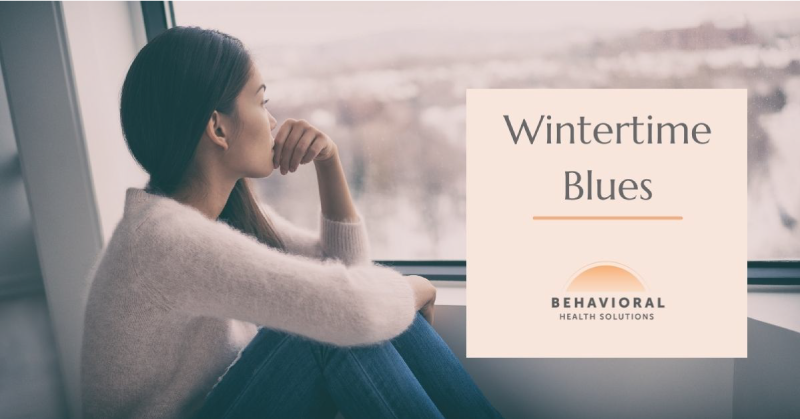Mood changes that seem to begin and end with seasonal changes affect many people, but changes that are prolonged or pronounced are more than just moodiness. They may be a form of depression related to seasonal changes known as Seasonal Affective Disorder (SAD.) Typically, these symptoms start in the Fall and continue through Winter resolving in the Spring; this is known as winter-pattern SAD. There is a less common form of SAD related to the Spring and Summer seasonal changes referred to as summer-pattern SAD.
SAD is a type of depression found to be cyclical with the seasons and have a typical duration of 4 to 5 months. Depression has many signs and symptoms which may include lost of interest in activities, sadness, hopelessness, changes in sleep patterns, changes in eating habits and weight, fatigue, agitation, inability to concentrate and thoughts of suicide.
- If you are experiencing thoughts of suicide or death, please get help immediately – Call the Suicide Prevention Hotline at 1-800-273-8255.
Specific symptoms, associated with winter-pattern SAD include:
- Oversleeping
- Overeating – particularly high carbohydrate cravings
- Weight gain
- Social isolation – avoiding others
There is not a definitive reason identified for the onset of SAD, however, there are several factors that have been researched and linked to SAD.
- Circadian rhythms are altered throughout the year. With the changes in the length of days and less exposure to sunlight, your body may not be able to adjust well.
- Serotonin is a neurotransmitter that helps to regulate mood. Decreased sunlight may decrease the production of serotonin and trigger depression.
- Melatonin levels may also be affected impacting sleep cycles.
SAD is found to affect more women than men and it also affects more of those living further from the equator. People with a history of bipolar or other depressive disorders are more likely to be suffer with SAD.
Take Charge!
There are changes in your lifestyle that you can employ to prevent SAD or improve symptoms:
Stay Active: find opportunities to exercise and remain active throughout the fall and winter months
Seek out sunlight: brighten your environment with natural and artificial light; go outside for exposure to sunshine on sunny days
Maintain a routine sleep pattern: work to have normal and adequate sleep regularly with bedtime routines and get up at the same time daily
Balanced nutrition: don’t allow carbohydrates to dominate your intake; be certain to add protein to your meals and snacks
Professional help is available. Professional treatments include prescriptive light therapy, talk therapy and medication. Light therapy (phototherapy) involves daily exposure to very bright light during the 1st hour after waking. Talk therapy or psychotherapy helps identify triggers and coping mechanisms for depressive symptoms. And anti-depressant medications are useful in many circumstances to help overcome severe depression.
If you are affected by seasonal depression that is more than just a passing case of the winter-time blues, our professionals can help you. Call BHS at 702-608-1976.

